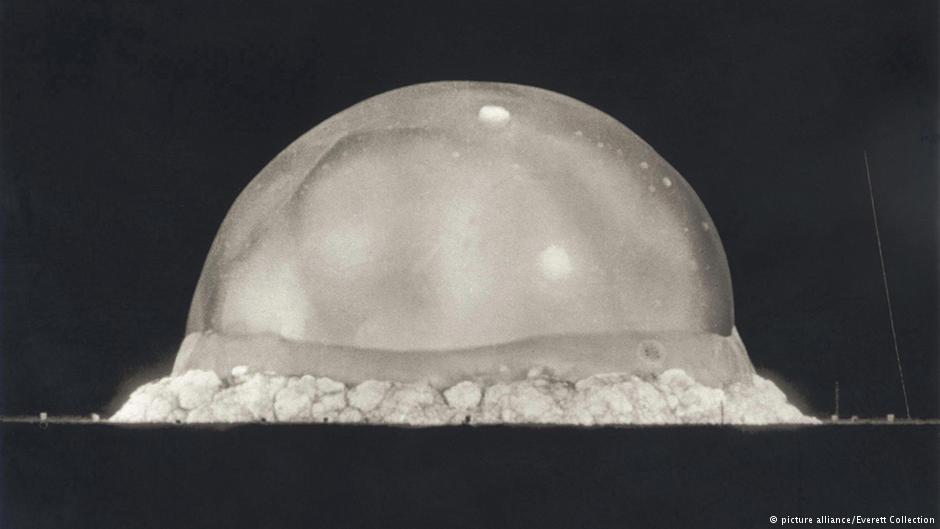On July 16, 1945, at 5:29 a.m., scientists conducted the first nuclear weapon test ever. Its codename: Trinity. The United States Army wanted to observe the effects of its atomic bomb in real life under testing conditions. As a testing ground, they chose the Jornada del Muerto desert about 35 miles (56 km) southeast of Socorro, New Mexico. A team of scientists headed by physicist Robert Oppenheimer and US Army General Leslie Groves had been working on the bomb since December 1941. Nicknamed “The Gadget,” it was supposed to end World War II. The first atomic bomb was an implosion-design plutonium device: the plutonium is surrounded by explosives, which upon ignition squeeze the plutonium to higher density. That’s when the nuclear chain reaction starts: the actual atomic bomb explodes. Annhiliating life The secret detonation was initially planned for 4:00 a.m., but was postponed because of rain and lightning. The atomic bomb exploded with an energy equivalent of 20,000 tons of TNT. In his official report, General Thomas Farrell wrote that “the lighting effects beggared description.” It could still be seen almost 186 miles away. The gigantic mushroom cloud reached 7.5 miles in height. The explosions left a crater almost 10 feet (3 meters) deep and 1083 feet (330 meters) wide. Within a radius of about a mile, all form of life was eliminated. The explosion reached such a high temperature that the sand around Trinity ground zero melted. A glassy, light greenish residue formed, called trinitite. It is available from mineral dealers. Trinitite was said to be harmless and good for jewelry. That’s not true, though: the material is weakly radioactive. The end of the beginning On August 6, about three weeks after Trinity, the United States Air Force dropped an atomic bomb on the city of Hiroshima. A second bomb followed on August 9, hitting the city of Nagasaki. Just as the Americans had planned, using the atomic bombs led to the final end of World War II. But it came at a high price: 200,000 people lost their lives – about 98 percent of the cities’ population. They died either immediately in the detonation, or afterward from long-term radiation poisoning. The radiation contaminated groundwater and soil. Years later, people still became sick and died from radiation. Today, the leukemia rate in Hiroshima continues to be higher than in the rest of Japan. Nuclear testing in the Pacific Ocean Yet the end of World War II didn’t mean the end of nuclear weapons programs. The Cold War ignited an arms race, in which atomic bombs played the major role. In the 1940s and 50s, the US Army tested more than 20 atomic bombs at Bikini Atoll in the Marshall islands. The natives were resettled to the much smaller Rongerik Atoll. But due to a lack of food there, many residents starved. Those who survived, and their descendants, now live on remote Kili Island and receive monetary compensation from the US government. In 2010, UNESCO named Bikini Atoll a World Heritage site. It is popular with scuba divers, because ten shipwrecks lie on the sea floor in the lagoon. The Americans brought these ships to the atoll roughly 70 years ago to investigate the effect of an atomic bomb on a naval fleet. They must have been quite satisfied: all ships sank during the tests.
DW















